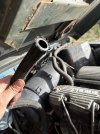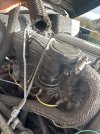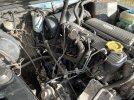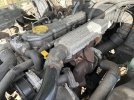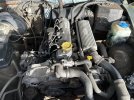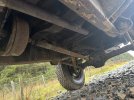Hi Folks,
Apologies if questions seem ridiculous I’m rather new to this..
This pipe has a small amount of smoke coming out which I have noticed after it has come off the air filter. Is this smoke bad/ what problem does this indicate?
In addition it runs from the small black device which is not a turbo as I would have expected. In fact on looking I can’t see anything that looks like a turbo in the engine bay. -If anyone could identify or shed light that would be amazing - thanks!
I had noticed black tar like material on changing air filter which would make sense given the small amount of smoke that must have been going in.


Apologies if questions seem ridiculous I’m rather new to this..
This pipe has a small amount of smoke coming out which I have noticed after it has come off the air filter. Is this smoke bad/ what problem does this indicate?
In addition it runs from the small black device which is not a turbo as I would have expected. In fact on looking I can’t see anything that looks like a turbo in the engine bay. -If anyone could identify or shed light that would be amazing - thanks!
I had noticed black tar like material on changing air filter which would make sense given the small amount of smoke that must have been going in.

